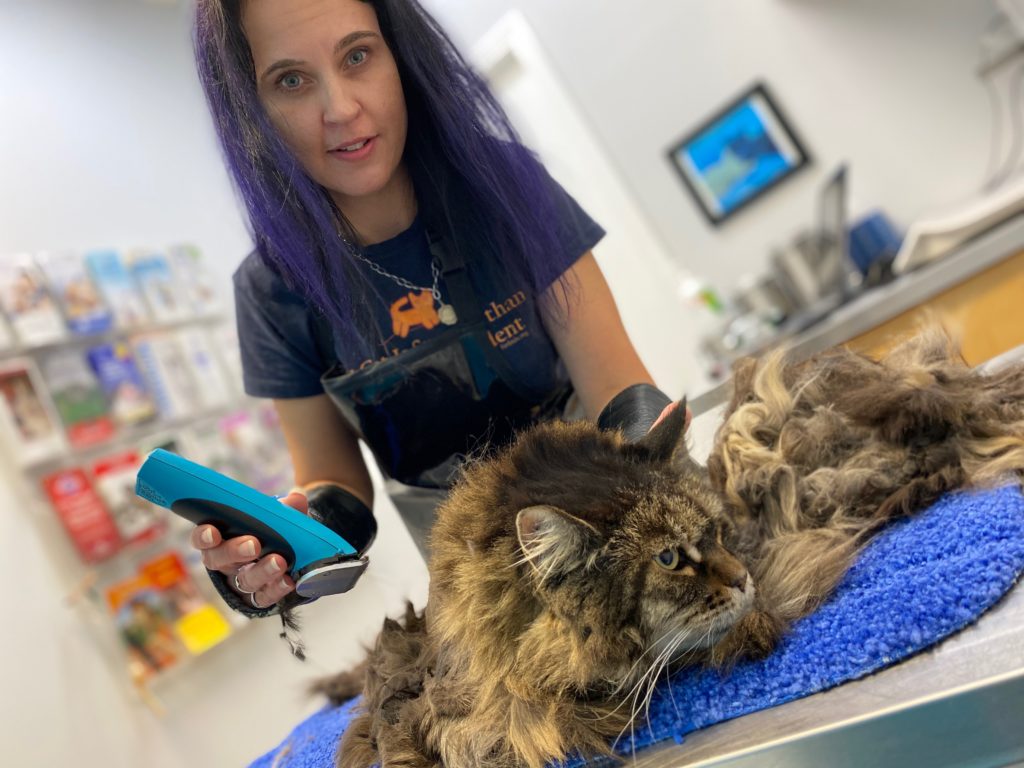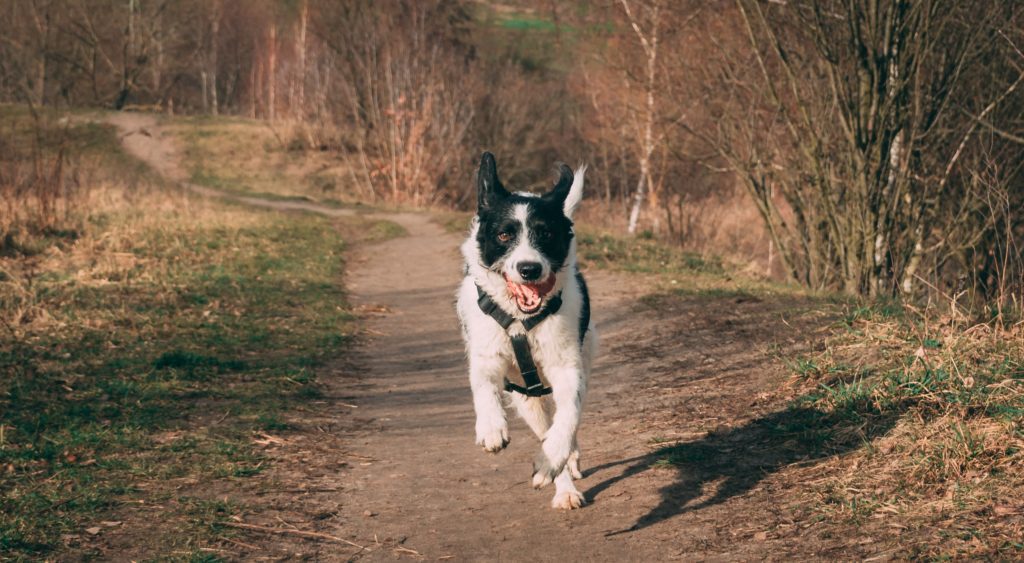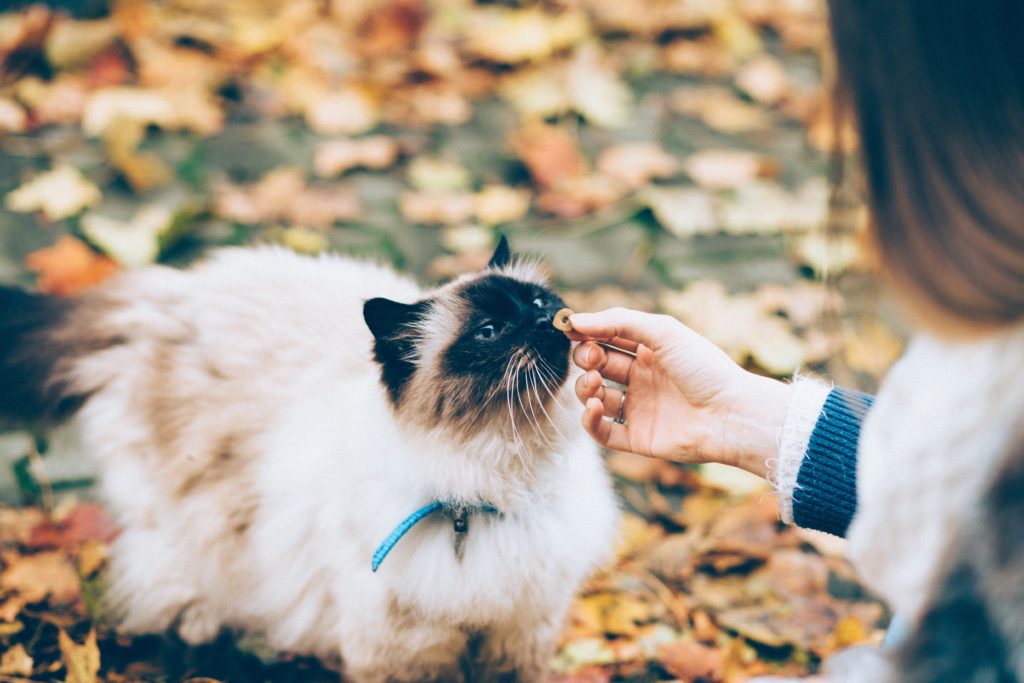For many, welcoming a new pet into their home has brought much-needed joy during an extremely stressful year. According to Rover, one-third of the U.S. population welcomed a new pet during the COVID-19 pandemic. When looking at 500 rescue organizations across the U.S., the Washington Post estimates that there were nearly 26,000 more pet adoptions in 2020 as compared to 2019.
Nearly 40% of U.S. households have dogs with 25% owning cats, with other households owning everything from fish to snakes to horses. Total, around 67% of households, or 84.9 million people, have a pet at home.
For teleworkers and on-site workers alike, having a pet at home has brought comfort and company when people needed it the most. But now, as the pandemic has evolved, how can we support our pets as many of us transition back into the office?
We spoke with two training experts, Michael Litzky, Director of Training and Head Trainer at Barking Hound Village and Barking Hound Village Training, and Ingrid Johnson, Certified Cat Behavior Consultant at her business, Fundamentally Feline, about how to prepare your dogs and cats as you get ready to head back to the workplace.


PLANNING AHEAD
As you consider your options for pets during the day, talk with your employer to understand the expectations for hours and days you will be back in the office. Knowing what your schedule will look like will help you to better calibrate your plans for keeping your pets safe and healthy while you are away.
ROUTINE IS KEY
Whether you have cats or dogs, both Michael and Ingrid agree that establishing a routine is vital to keeping your pets healthy and calm as you begin your transition back to the office. As with people, newness can be scary for pets. And while pets are resilient, we want to be sure that we are setting them up for success as situations change. Establishing a clear routine and sticking to a schedule will help your pets to thrive when you cannot be home, because it will give them a sense of security in knowing things like when to expect food and when you will be home.
When changing routines, take it slow – begin to incorporate elements of the new routine and add over time. Both Michael and Ingrid say that, when you know that changes are coming, slowly implementing those changes helps your pets cope. Keep in mind that each pet is going to have different needs, so you may need to adjust your schedule to keep in line with the needs of your pet.
Michael says that, for dogs, beginning to implement your morning routine when you will be heading into the office is a good idea. For example, if your workday starts at 9am and you are currently working from home, you may be getting up at 8 and feeding your dog, making your coffee, etc. around 8:30. However, when you start going into the office, you may need to get up at 7 so that you have time to get ready, walk the dog and make your commute. Michael says that starting to use this new routine while you are still working from home can help your dog begin to adjust to the changing schedule.
Ingrid echoes this sentiment for cats. For example, cats are accustomed to a certain schedule of playing, feeding, and litter scooping. If you anticipate that the time you will need to do these activities will change with your return to the office, begin to slowly move the times as soon as possible. For example, if you expect that you will need to move your scoop schedule from 10am to 5pm, begin to slowly adjust the time closer and closer to that 5pm mark.
Dog Tip: Get them used to you leaving
Work up to leaving your dog all day, especially if they are a pandemic puppy who may not be accustomed to you leaving the house much. Michael suggests adding onto the morning routine you will practice for your return to the office. Practice heading out at the same time you would when you head into your workplace, but maybe instead just go for a cup of coffee or to the gym. Even just staying out for an hour can help your dog to adjust to the upcoming schedule change – it’s important for them to be comfortable with you leaving and coming back! In this same vein, if you are getting your dog accustomed to being in their crate or at daycare while you are at work, it’s a good idea to slowly work up to being in the crate or at daycare a few hours at a time.
Cat Tip: Get creative with food
To help maintain a routine for cats who are used to eating during the day, even when you are gone, consider how you can keep their feeding on track. Investing in a food dispenser for your cat can be an option but considering a broader set of feeding possibilities can help to keep your cat engaged. Consider food puzzles to help keep your cat’s feeding on schedule while also giving them something enjoyable to do during the day!
PRIORITIZE EXERCISE AND ENRICHMENT
To help you have happy and healthy pets, exercise and enrichment are key! They help to keep your pet’s brain and body engaged and keep them from getting bored (and even destructive).
Tip: Strategize your exercise
For dogs, Michael says it is important to be proactive about getting their energy out. Of course, it is important to know your own dog’s exercise needs, but in general make sure to make time for a walk or time at the park each day. If your dog was used to being at home all-day every day before the pandemic, they will likely go back to that easily and may only need exercise at the end of your workday. But, for those dogs who aren’t used to you being gone, it may be a good idea to try to plan exercise in the morning to help tire them out for the hours after when you will be away.
For cats, one option for exercise is a cat wheel, which allows them to run and get out their energy (if your cat isn’t used to a wheel, check out these tips for getting them accustomed to one). Foraging can also be a great way for your cat to get some exercise. Ingrid outlines dozens of ways you can get started with foraging in your house here.
Tip: Keep them engaged with enrichment
Ingrid says to help keep your cat from feeling lonely, enrichment can be a great way to keep them active while you are away during the day. She says that enrichment can range from something as passive as leaving the tv on with Youtube videos for cats playing to full blown puzzles around the house. Ingrid also says that scent enrichment can be a really good way to keep your cat engaged. To do this, consider filling a box with some sticks and leaves from outside. She says that you can even hide food in the box, too! Other enrichment ideas she suggests include interactive toys and water fountains, among many others.
Of course, enrichment is key for dogs, too. Michael says that interactive toys, like Kong toys, lick mats and even cardboard boxes, can be great ways to keep your dog engaged even when you aren’t home. For heavy chewers or puppies still in the chewing phase, it may not be a good idea to leave out enrichment toys when you aren’t home. Know your dog and when you need to supervise!
KNOW THE SIGNS OF ANXIETY AND WHEN TO SEEK MORE HELP
Knowing the signs of distress or anxiety in your pet is important to help you know when you need to seek additional assistance from a trainer.
Signs of anxiety and stress in dogs
Michael lists some key signs to look out for in your dog’s behavior:
- Avoidance signals, like yawning, flicking out their tongue or looking away
- Excess panting or drooling (not from heat or exercise)
- Big eyes
- Pacing or shaking
- Tucked tail (the more it is tucked, the more stressed or afraid the dog is)
Signs of anxiety and stress in cats
Ingrid says that one of the best ways to know if your cat is stressed is monitoring their intakes and outputs, so she strongly advises against automatic litter scoopers. Others sign of distress include:
- Over-grooming, especially in easy-to-reach places and symmetrically
- Sterile cystitis
- Changes in appetite (both lack of and excessive appetites)
- Fighting or aggression with housemates
Finding a Trainer
If your pet is experiencing a lot of stress as you make changes to head back into the office, consider consulting with a trainer. It’s important to get in front of your pet’s anxiety before it worsens.
When looking for dog trainers, Michael recommends:
- Look for those who use positive reinforcement only
- Look for trainers who are certified with the Certification Council for Professional Dog Trainers
- Look for trainers who are clear about their training methods
When looking for cat trainers, Ingrid suggests:
- Educate yourself about anxiety in your pet with resources from Fear Free Happy Homes
- Check for trainers at the International Association of Animal Behavior Consultants (for dogs, too)
- Ask your vet about referrals for a veterinary behaviorist






